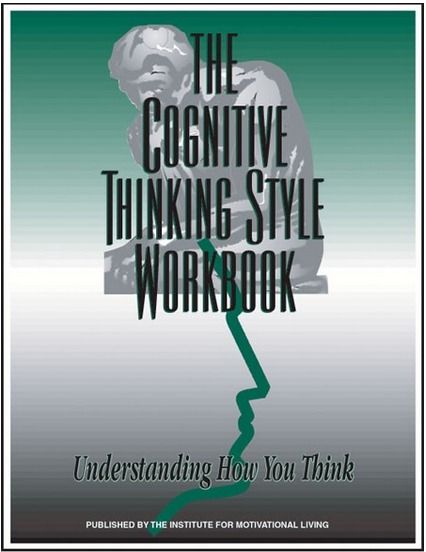We received The Cognitive Thinking Style Workbook from PeopleKeys for review purposes.

Product link: The Cognitive Thinking Style Workbook
Vendor Contact Information: PeopleKeys
Age Appeal: 13-adult
Format: 17 page workbook
Price: $13

Do you know what your style of cognitive thinking is? I didn’t until I filled out this workbook. Filling out this workbook will help you determine whether you are a Literal Thinker, Intuitive Thinker, Theoretical Thinker, or Experiential Thinker and how to make your thinking style work best for you. It will also help you determine what characteristics you may like to develop from the other cognitive styles.
Our Experience:
B and C are younger than the company’s recommended age to do this workbook, but I think that B could do part of this and learn how he thinks. That being said, I worked on the workbook and Dad took a look at it. I worked on it on several different occasions, because I wanted the information to soak into my head. I wanted to make sure I gave each style of thinking the best answers possible.
I wasn’t sure what style of thinker I was, but I did have a thought and I was right. I was primarily a Literal Thinker with a score of 27, the Intuitive Thinker had a score of 20, the Theoretical Thinker had 19, and a score of 14 for the Experiential Thinker. I knew I could never be a Experiential Thinker, because they are curious and can think in original ways. I do think that since I have had children that I have become more of an Intuitive Thinker and less of a Literal Thinker. One of my sisters read the descriptions and she agreed that I was a Literal Thinker.
Based on my experience of filling out the workbook and what my styles have been like in middle school, high school, and college; I would recommend that students should do this workbook every couple of years, because you change over time.
I Liked:
- I liked that the format was straight forward and the statements in the profile section were easy to decide which were most like me and which were not.
- I really enjoyed the section called, “How You May Improve Learning,” because it showed me what I can do to learn and work more efficiently. Some ideas for me would be frequent feedback and quiet work area. There were also a lot of great ideas for students and how to work best when taking tests and communicating with their teachers.
- Another section of the workbook that I thought was very helpful was the “Cognitive Thinking Style Wrap Up.” I liked it because it asked me to think of my strengths and weaknesses from my cognitive style and what characteristics I would like to develop from the other cognitive styles.
I Disliked:
- I liked everything about this workbook.
What B (boy, age nine, officially in fourth grade) Liked and Disliked:
B was too young for The Cognitive Thinking Style Workbook.
What C (girl, age seven, officially in second grade) Liked and Disliked:
C was too young for The Cognitive Thinking Style Workbook.
Dad’s Call:
Dad is now available for reviews!
I liked this workbook as it helps you to focus on what your thinking strengths are. When you seek to understand yourself, your thoughts and your actions, you discover how you can relate to others better by understanding your thought processes and how they interact with others.
It’s been said that you should spend 85% of your time in your best strengths, 10% in areas that you’re good at, and 5% in areas where you are weak. The Cognitive Thinking Style Workbook will help to clarify your strengths.
Mama recommends The Cognitive Style Workbook for all students from middle school to college.


No comments:
Post a Comment